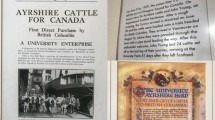Abstract
In celebrating the Journal’s 20 years of publication, one of its many storylines in science education is identified, and a potential second storyline in mathematics education is introduced. The first looks back 20 years to trace a trajectory of articles about enhancing school science with Indigenous ways of living in Mother Earth. The second looks ahead to what may likely evolve into a trajectory about enhancing school mathematics with Indigenous mathematizing. The article ends by describing a recent research study that gives detailed texture to this emerging trajectory.
Résumé
Alors que l’on célèbre les 20 ans de publication du Journal, deux de ses nombreuses trames sont recensées. La première retourne 20 ans en arrière pour tracer une trajectoire d'articles sur le rehaussement de la science scolaire par l’intégration des modes de vie autochtones sur la Terre Mère. Une deuxième trame se penche sur ce qui pourrait probablement devenir une trajectoire de rehaussement des mathématiques scolaires par l’intégration de la mathématisation autochtone. L'article se termine par la description d'une étude récente qui présente moult détails sur cette nouvelle trajectoire.


Similar content being viewed by others
Notes
Hill Street Blues was a popular comedy TV series that appeared 1981–1987 and won several awards. It followed the daily work life of a New York precinct.
“Postcolonial” does not mean colonialism has ended, but rather, it means all forms of systemic colonialism are identified, critiqued and changed, with respect to social justice.
By political necessity, the status quo organization of science textbooks needed to be maintained, rather than follow the Indigenous-oriented organization used in Rekindling Traditions (Aikenhead, 2002a). By adding Indigenous content to the textbook was enough of a major change for science teachers, without revamping the organization of science topics as well.
At the end of the R&D project, all participants decided to have their real names used in public documents, rather than be anonymous.
These heuristic flexible categories discourage simplistic dichotomies concerning student achievement. They are not meant to be used in tracking students. Categorization is ephemeral, influenced by many variables, such as mathematics topic, teacher, age, SES and systemic racism.
The Provincial Education Sector is a consortium of the Ministry of Education with 28 Boards of Education across Saskatchewan.
References
Adams, B. L., Shehenaz Adam, A., & Opbroek, M. (2005). Reversing the academic trend for rural students: The case of Michelle Opbroek. Journal of American Indian Education, 44(3), 55-79.
Aikenhead, G. S. (1997). Toward a First Nations cross-cultural science and technology curriculum. Science Education, 81, 217-238.
Aikenhead, G. S. (2000). Rekindling Traditions: Cross-cultural science & technology units. Retrieved from http://www.usask.ca/education/ccstu/. Accessed 1 Jul 2017.
Aikenhead, G. S. (2002a). Cross-cultural science teaching: Rekindling Traditions for Aboriginal students. Canadian Journal of Science, Mathematics, and Technology Education, 2, 287-304.
Aikenhead, G. S. (2002b). The educo-politics of curriculum development. Canadian Journal of Science, Mathematics, and Technology Education, 2, 49-57.
Aikenhead, G. S. (2006). Towards decolonizing the pan-Canadian science framework. Canadian Journal of Science, Mathematics, and Technology Education, 6, 387-399.
Aikenhead, G. S. (2017) Enhancing school mathematics culturally: A path of reconciliation. Canadian Journal of Science, Mathematics, and Technology Education, 17(special monograph issue), 73-140.
Aikenhead, G. S., & Elliott, D. (2010). An emerging decolonizing science education in Canada. Canadian Journal of Science, Mathematics, and Technology Education, 10, 321-338.
Australian Government Department of Education. (2014). Review of the Australian Curriculum. Canberra. Retrieved from https://docs.education.gov.au/system/files/doc/other/review_of_the_national_curriculum_final_report.pdf. Accessed 23 Dec 2019.
Bang, M., & Medin, D. (2010). Cultural processes in science education: Supporting the navigation of multiple epistemologies. Science Education, 94, 1009-1026.
Barta, J., Eglash, R., & Barkely, C. (2014). The crossroads of mathematics and culture. In J. Barta, R. Eglash & C. Barkeley (Eds.) Math is a verb (pp. 1-7). Reston: National Council of Teachers of Mathematics.
Beatty, R., & Blair, D. (2015). Indigenous pedagogy for early mathematics: Algonquin looming in a grade 2 math classroom. The International Journal of Holistic Early Learning and Development, 1, 3-24.
Belczewski, A. (2009). Decolonizing science education and the science teacher: A White teacher’s perspective. Canadian Journal of Science, Mathematics, and Technology Education, 9, 191-202.
Bellringer, C. (2019). Progress audit: The education of Aboriginal students in the B.C. public school system. Victoria: Office of the Auditor General of British Columbia.
Bishop, A. J. (1988a). Mathematical enculturation: A cultural perspective on mathematics education. Dordrecht: Kluwer Academic Publishers.
Bishop, A. J. (1988b). The interactions of mathematics education with culture. Cultural Dynamics, 1(2), 145–157.
Canadian Press. (2019). Saskatchewan high school graduation rates going up, but slowly. Retrieved from https://thestarphoenix.com/news/local-news/saskatchewan-high-school-graduation-rates-going-up-but-slowly. Accessed 28 Jun 2019.
Card, D., & Payne, A. A. (2017). High school choices and the gender gap in STEM (Working Paper 23769). Cambridge: National Bureau of Economic Research. Retrieved from http://www.nber.org/papers/w23769. Accessed 4 Jan 2020.
CBC News. (2019). Schools in Carrot River, Sask., incorporating Indigenous culture into math class to engage youth. Retrieved from https://www.cbc.ca/amp/1.5346736. Accessed 20 Nov 2019.
CMEC (Council of Ministers of Education, Canada). (1997). Common framework of science learning outcomes: Pan-Canadian protocol for collaboration on school curriculum. Ottawa: Author.
CNN.Com [Education]. (2005). The most unpopular school subject. Retrieved from http://www.cnn.com/2005/EDUCATION/08/17/school.subjects.ap/index.html. Accessed Jun 2019.
Deloria, V. (1992). Relativity, relatedness and reality. Winds of Change, 7(Autumn), 35-40.
Director, B. (2006). On the 375th anniversary of Kepler’s passing. FIDELIO Magazine, 15(1-2), 98-113. Retrieved from http://www.schillerinstitute.org/fid_02-06/2006/061-2_375_Kepler.html. Accessed 24 Jan 2017.
Doolittle, E. (2006). Mathematics as medicine. In P. Liljedahl (Ed.), Proceedings of the annual meeting of the Canadian Mathematics Education Study Group (pp. 17-25). Calgary, : University of Calgary.
Duchscherer, K., Palmer, S., Shemrock, K., Vankoughnett, D., Carson, S., Meyer, S., et al. (2019). A report to the McDowell Foundation: Indigenous culture-based school mathematics for reconciliation and professional development. Saskatoon: Stirling McDowell Foundation. Retrieved from http://mcdowellfoundation.ca/research/culture-based-school-mathematics-for-reconciliation-and-professional-development/. Accessed 23 Dec 2019.
Dweck, C. (2006). Mindset: The new psychology of success. New York: Ballantine Books.
EFN Staff. (2019). New approaches to [W]estern and [I]ndigenous math instruction. Eagle Feather News. Saskatoon. Retrieved from https://www.eaglefeathernews.com/news/new-approaches-to-western-and-indigenous-math-instruction. Accessed 20 Nov 2019.
Einstein, A. (1930). Albert Einstein über Kepler. Frankfurter Zeitung. Frankfurt, Germany.
Ernest, P. (2016a). Mathematics and values. In B. Larvor (Ed.), Mathematical cultures (pp. 189-214). Cham: Springer International Publishing.
Ernest, P. (2016b). Mathematics education ideologies and globalization. In P. Ernest, B. Sriraman & N. Ernest (Eds.), Critical mathematics education: Theory, praxis and reality (pp. 35-79). Charlotte: Information Age Publishing.
Ernest, P. (2016c). The problem of certainty in mathematics. Educational Studies in Mathematics, 92, 379-393.
Fensham, P. J. (2002). Time to change drivers for scientific literacy. Canadian Journal of Science, Mathematics, and Technology Education, 2, 9-24.
Garroutte, E. M. (1999). American Indian science education: The second step. American Indian Culture and Research Journal, 23(4), 91-108.
George, J., & Glasgow, J. (1988). Street science and conventional science in the West Indies. Studies in Science Education, 15, 109–118.
Giesbrecht, L. (2019). Project bringing Indigenous ways into math classes sees improved student understanding. Regina Leader-Post. Regina, Canada. Retrieved from https://leaderpost.com/news/saskatchewan/project-bringing-indigenous-ways-into-math-classes-sees-improved-student-understanding. Accessed 7 Mar 2020.
Hall, E. T. (1976). Beyond culture. Toronto: Doubleday.
Hatcher, A., Bartlett, C., Marshall, A., & Marshall, M. (2009). Two-eyed seeing in the classroom environment: Concepts, approaches, and challenges. Canadian Journal of Science, Mathematics, and Technology Education, 9, 141–153.
Higgins, M. (2014). De/colonizing pedagogy and pedagogue: Science education through participatory and reflexive videography. Canadian Journal of Science, Mathematics, and Technology Education, 14, 154-171.
Jannok Nutti, Y. (2013). Indigenous teachers’ experiences of the implementation of culture-based mathematics activities in Sámi schools. Mathematics Education Research Journal, 25, 57-72.
Jegede, O. J., & Okebukola, P. A. (1990). The relationship between African traditional cosmology and students’ acquisition of a science process skill. International Journal of Science Education, 12, 37–47.
Kawagley, O. (1995). A Yupiaq worldview. Prospect Heights: Waveland Press.
Kim, E-J. A., Asghar, A., & Jordan, S. (2017). A critical review of traditional ecological knowledge (TEK) in science education. Canadian Journal of Science, Mathematics, and Technology Education, 17, 258-270.
Lewthwaite, R., & Renaud, R. (2009). Pilimmaksarniq: Working together for the common good in science curriculum development and delivery in Nunavut. Canadian Journal of Science, Mathematics, and Technology Education, 9, 154-172.
Lipka, J., & Adams, B. (2004). Culturally based math education as a way to improve Alaska Native students’ math performance, Working Paper No. 20. Athens: Appalachian Center for Learning, Assessment, and Instruction in Mathematics.
Lipka, J., Webster, J. P., & Yanez, E. (2005). Factors that affect Alaska Native students’ mathematical performance. Journal of American Indian Education, 44(3), 1-8.
Lipka, J., Wong, M., & Andrew-Irhke, D. (2013). Alaska Native Indigenous knowledge: Opportunities for learning mathematics. Mathematics Education Research Journal 25, 129-150.
Lunney Borden, L., (2013). What’s the word for…? Is there a word for…? How understanding Mi′kmaw language can help support Mi′kmaw learners in mathematics. Mathematics Education Research Journal, 25, 5-22.
Lunney Borden, L. (2019). Show me your math (video). Retrieved from http://showmeyourmath.ca/. Accessed 21 Jan 2020.
MacIvor, M. (1995). Redefining science education for Aboriginal students. In M. Battiste & J. Barman (Eds.), First Nations education in Canada: The circle unfolds (pp. 73–98). Vancouver: University of British Columbia Press.
Makins, M. (1994). Collins English Dictionary. (3rd ed.). Glasgow: HarperCollins Publishers.
McKinley, E. (2001). Cultural diversity: Masking power with innocence. Science Education, 85, 74–76.
McKinley, E., McPherson Waiti, P., & Bell, B. (1992). Language, culture and science education. International Journal of Science Education, 14, 579-595.
Meyer, S., & Aikenhead, G. (2021a). Indigenous culture-based school mathematics in action: Part I: Professional development for creating teaching materials. The Mathematics Enthusiast, 18(1), 100-118.
Meyer, S., & Aikenhead, G. (2021b). Indigenous culture-based school mathematics in action: Part II: The study’s results: What support do teachers need? The Mathematics Enthusiast, 18(1&2), 119-138.
Michell, H. (2009). (Guest Ed.). Indigenous science education from place: Best practices on Turtle Island. Canadian Journal of Science, Mathematics and Technology Education (Special issue), 9, 137-140.
Mukhopadhyay, S., & Greer, G. (2012). Ethnomathematics. In J. A. Banks (Ed.), Encyclopedia of diversity in education (pp. 857-861). Thousand Oaks: SAGE Publication.
Nicol, C., Archibald Q’um Q’um, J., Glanfield, F., & Dawson, A. J. (Eds.) (2020). Living culturally responsive mathematics education with/in Indigenous communities. Leiden, The Netherlands: Koninklijke Brill
Provincial Education Sector. (2020). SaskMATH: A provincial resource for teachers and leaders of mathematics in Saskatchewan. Retrieved from https://saskmath.ca/. Accessed 15 Aug 2020.
Richards, J., Hove, J., & Afolabi, K. (2008). Understanding the Aboriginal/non-Aboriginal gap in student performance: Lessons from British Columbia (Commentary No. 276). Toronto: C.D. Howe Institute.
Snively, G. (1990). Traditional Native Indian beliefs, cultural values, and science instruction. Canadian Journal of Native Education, 17, 44–59.
Sutherland, D., & Henning, D. (2009) Ininiwi-Kiskāanīıtamowin: A Framework for long-term science education. Canadian Journal of Science, Mathematics, and Technology Education, 9, 173-190.
Thigpen, R., & Canul, H. P. (2018). Chukte′og, Treasures of the Caribbean (Maya Edition). Florence: Marine Conservation without Borders (www.marinefrontiers.org). Accessed 16 Aug 2020.
TRC (Truth and Reconciliation Commission). (2016). A knock on the door. Winnipeg: University of Manitoba Press.
U.S. Congress House of Representatives Subcommittee on Early Childhood, Elementary and Secondary Education. (2008). Challenges facing bureau of Indian education schools in improving student achievement. Washington, DC: U.S. Government Printing Office.
View, T. (2016). Mîyo pîkiskwatitowin (speaking to each other in a good way): The significance of culture brokers in cross-cultural collaboration with Aboriginal peoples. Unpublished master’s thesis, University of Saskatchewan, Saskatoon, Canada.
Wagner, D. (2019). Changing storylines in public perceptions of mathematics education. Canadian Journal of Science, Mathematics, and Technology Education, 19, 61-72.
Funding
This R&D study was funded by the Stirling McDowell Foundation, Saskatoon, Saskatchewan, and by in-kind funding from the North East School Division, Melfort, Saskatchewan. Their support was crucial to the study.
Author information
Authors and Affiliations
Corresponding author
Ethics declarations
Conflict of interest
The author declares that there is no conflict of interest.
Additional information
Publisher’s Note
Springer Nature remains neutral with regard to jurisdictional claims in published maps and institutional affiliations.
Rights and permissions
About this article
Cite this article
Aikenhead, G. School Science and Mathematics Storylines. Can. J. Sci. Math. Techn. Educ. 20, 682–699 (2020). https://doi.org/10.1007/s42330-020-00115-5
Accepted:
Published:
Issue Date:
DOI: https://doi.org/10.1007/s42330-020-00115-5




